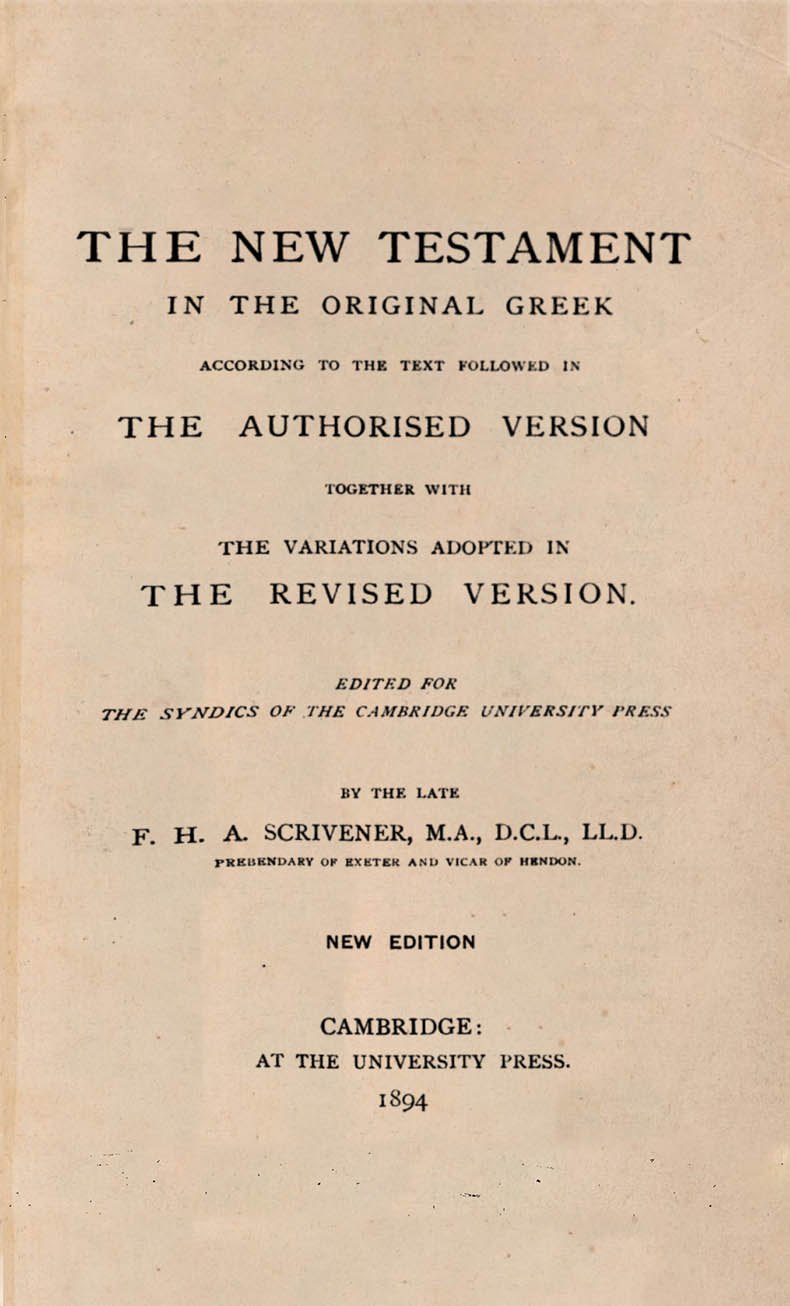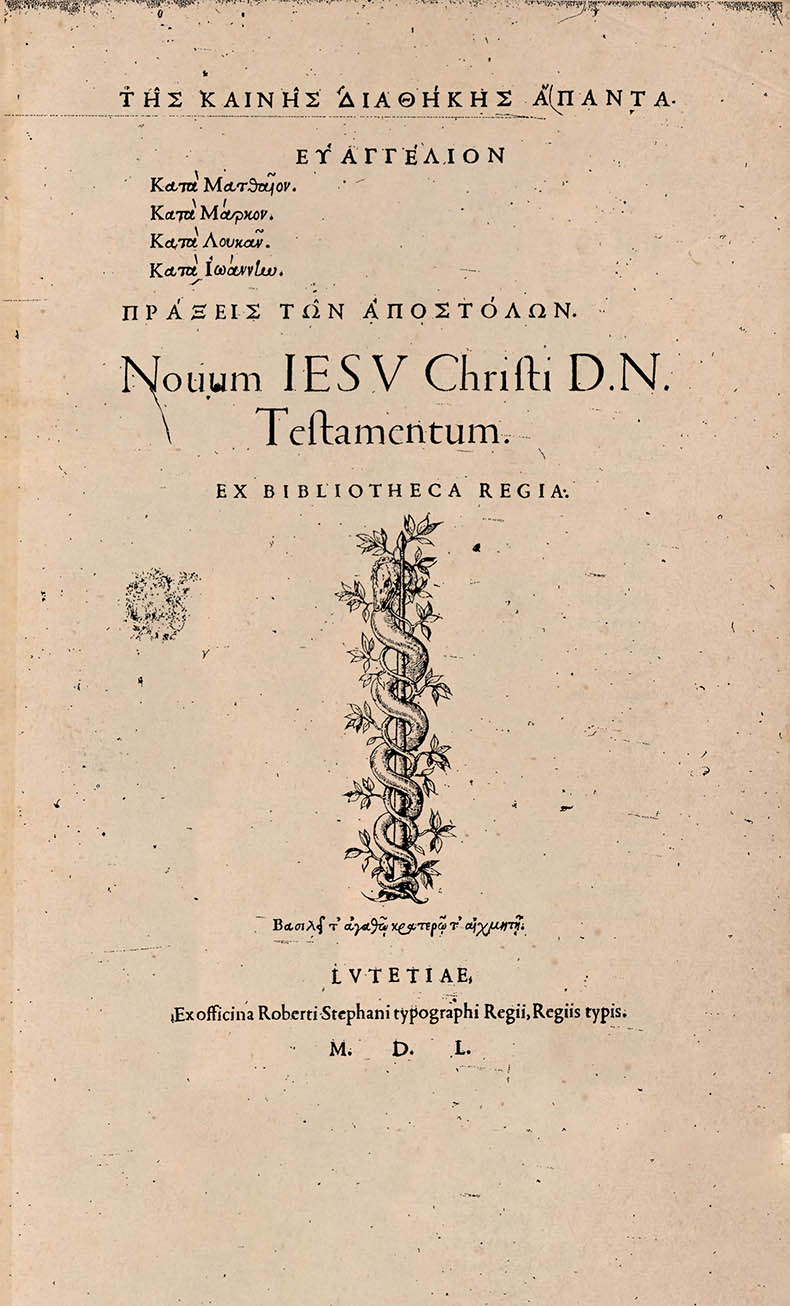Kinds of Differences among TRS
This page is a companion tool for a paper in the Detroit Baptist Seminary Journal, vol. 25, 2020, entitled, “Which TR? A Critique of Confessional Bibliology.” The paper is not neutral on the question of which text of the New Testament is best. But this page is. It simply presents the differences between 1) the standard Greek New Testament edition within KJV-Only and Confessional Bibliology circles and 2) the 1550 Stephanus GNT that was one of two Greek New Testament editions used by the KJV translators. The paper attempts to demonstrate that the same kinds of differences that occur between these two TRs occur between the TR and CT traditions more generally.
For a full list of differences between the two TR editions used by the KJV translators (Stephanus 1550 and Beza 1598), see the “Which TR?” page.
The two major sides in the debate over the TR both agree with the Trinitarian Bible Society in regarding the differences catalogued on this page as “minor.”
The Greek Received Text is the name given to a group of printed texts, the first of which was published by Desiderius Erasmus in 1516. The Society uses for the purposes of translation the text reconstructed by F.H.A. Scrivener in 1894. As the scope of the Society’s Constitution does not extend to considering the minor variations between the printed editions of the Textus Receptus, this necessarily excludes the Society from engaging in alteration or emendation of the Hebrew Masoretic and Greek Received Text on the basis of other Hebrew or Greek texts.
SCRIVENER Vs. STEPHANUS

SCRIVENER’S TR (1881)
READINGS THAT WERE ADOPTED BY THE KJV TRANSLATORS
On the top in each pairing is the KJV as it stands in most KJVs today, the 1769 Blayney edition.
Differences from Stephanus are
highlighted and marked in bold.
On the left is the KJV as it stands in most KJVs today, the 1769 Blayney edition.
Differences from Stephanus are
highlighted and marked in bold.
STEPHANUS’ TR (1550)
PLACES THE KJV TRANSLATORS CHOSE NOT TO FOLLOW STEPHANUS
On the bottom is the KJV as it would be if the KJV translators had chosen to follow Stephanus’ 1550 TR edition.
Differences from Beza are
highlighted and marked in bold.
On the right is the KJV as it would be if the KJV translators had chosen to follow Stephanus’ 1550 TR.
Differences from Beza are
highlighted and marked in bold.
1. Spelling differences
(This is a REPRESENTATIVE AND NOT an EXHAUSTIVE LISTING)
Matt 10:25 Βεελζεβοὺλ (beelzeboul)
Matt 24:15 Ἑστὸς (estos)
Βεελζεβοὺβ (beelzeboub)
ἑστὼς (estōs)
2. Differences that do not have to show up in translation, but could
3. Differences in word order that do not affect meaning
Mark 16:14 But afterward he appeared unto the eleven as they sat at meat, and upbraided them with their unbelief and hardness of heart, because they believed not them which had seen him after he was risen.
